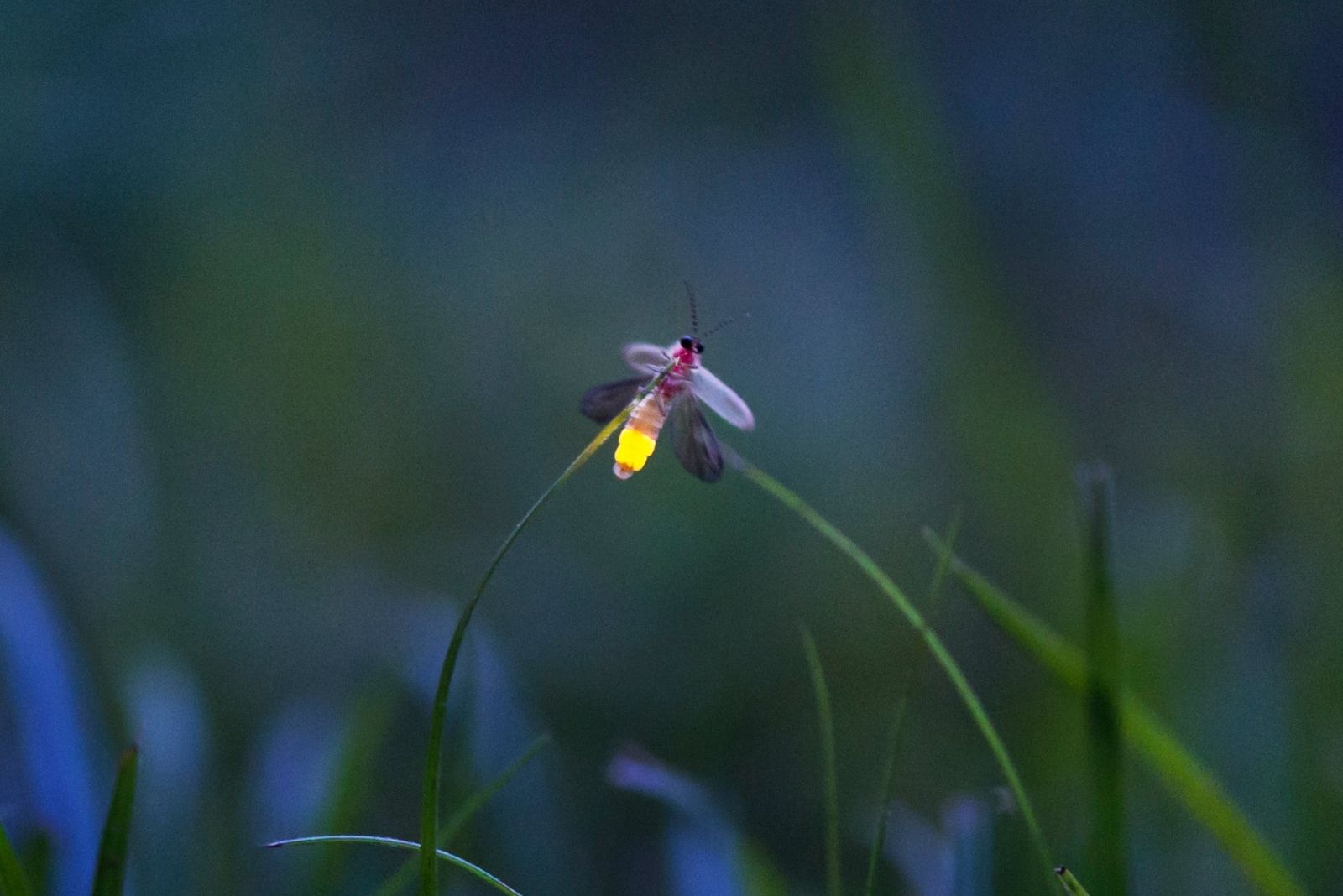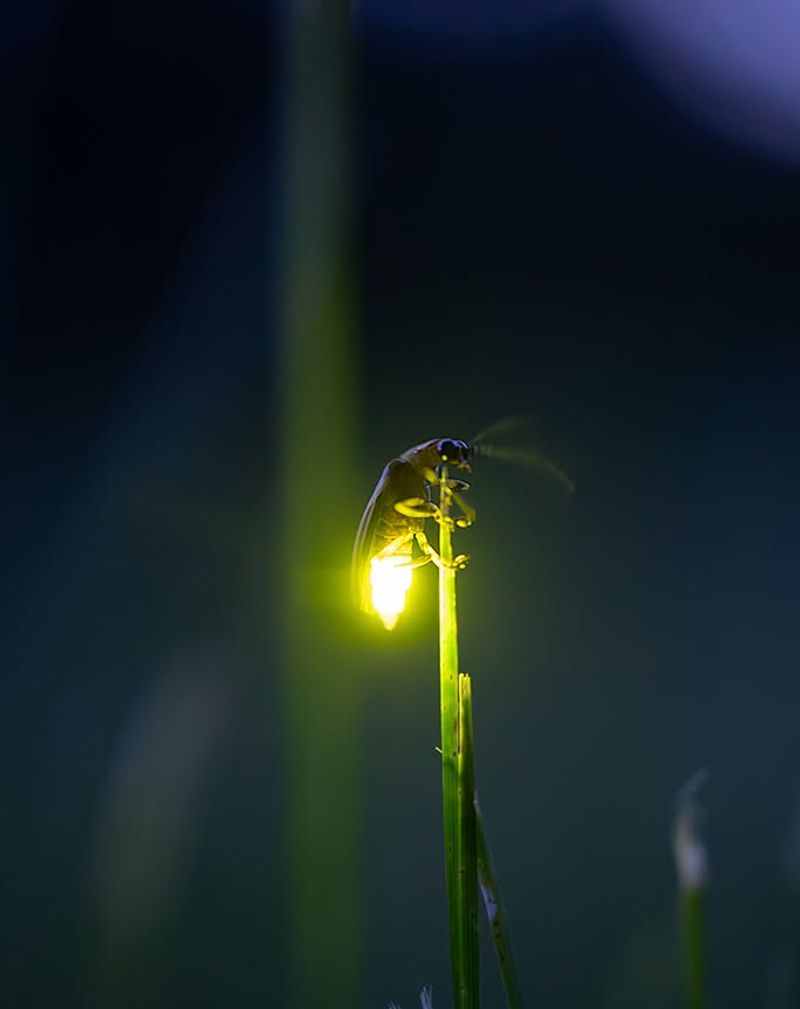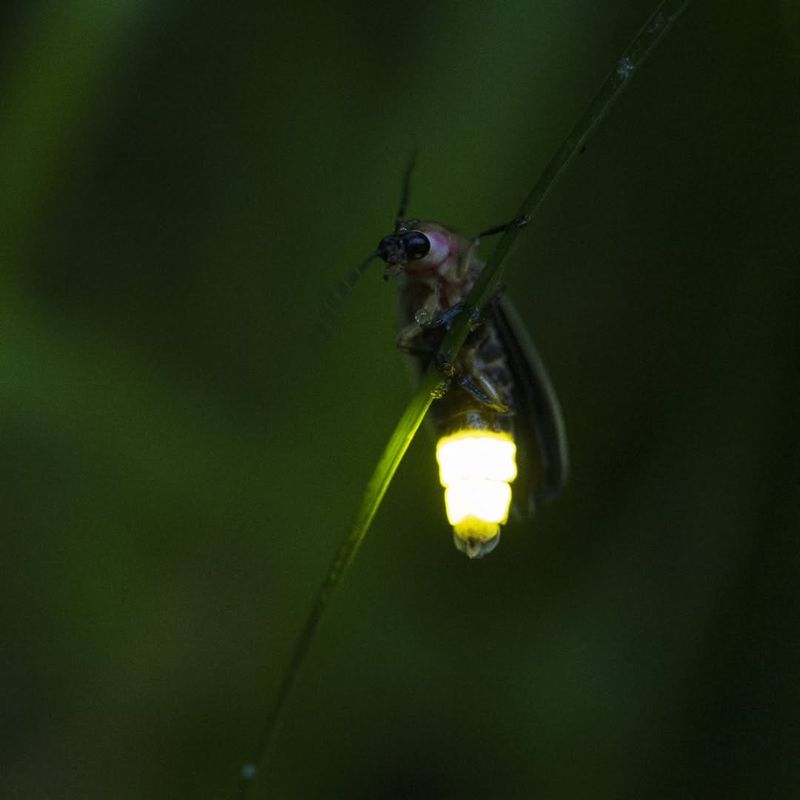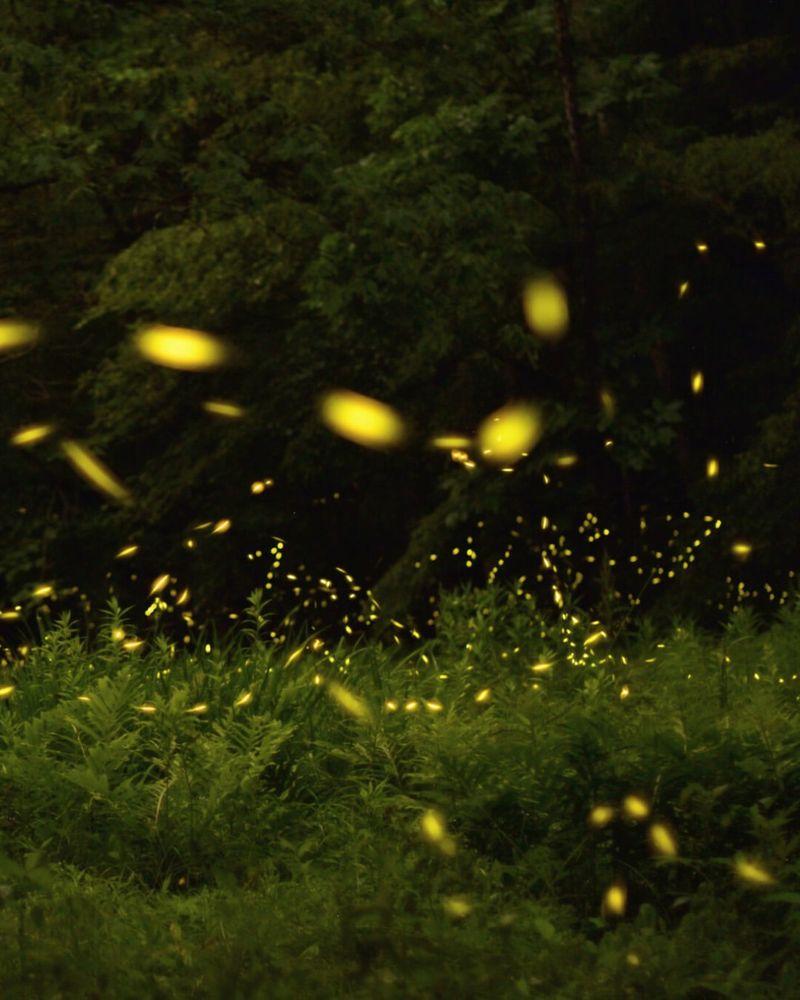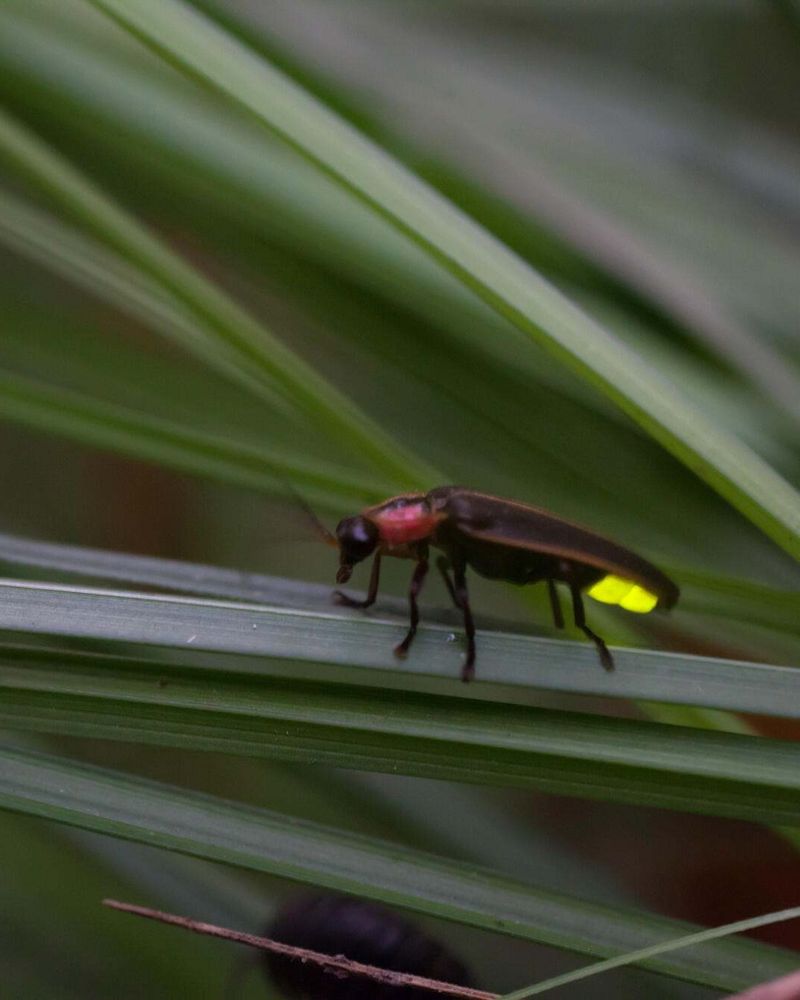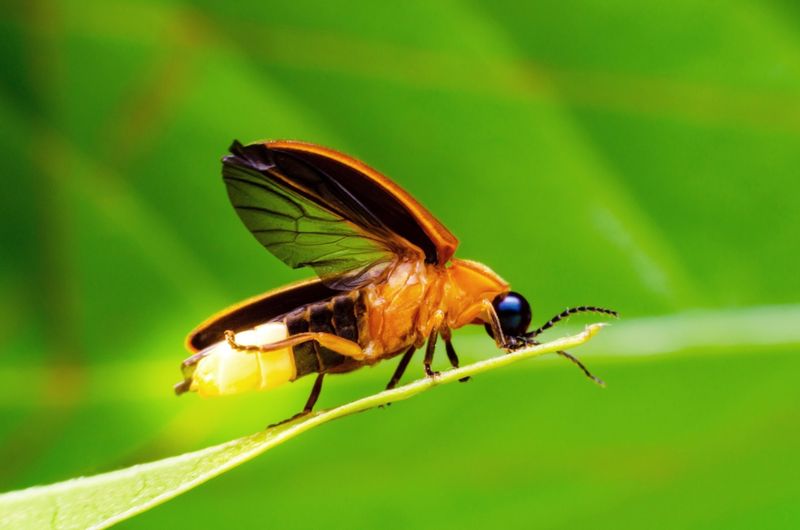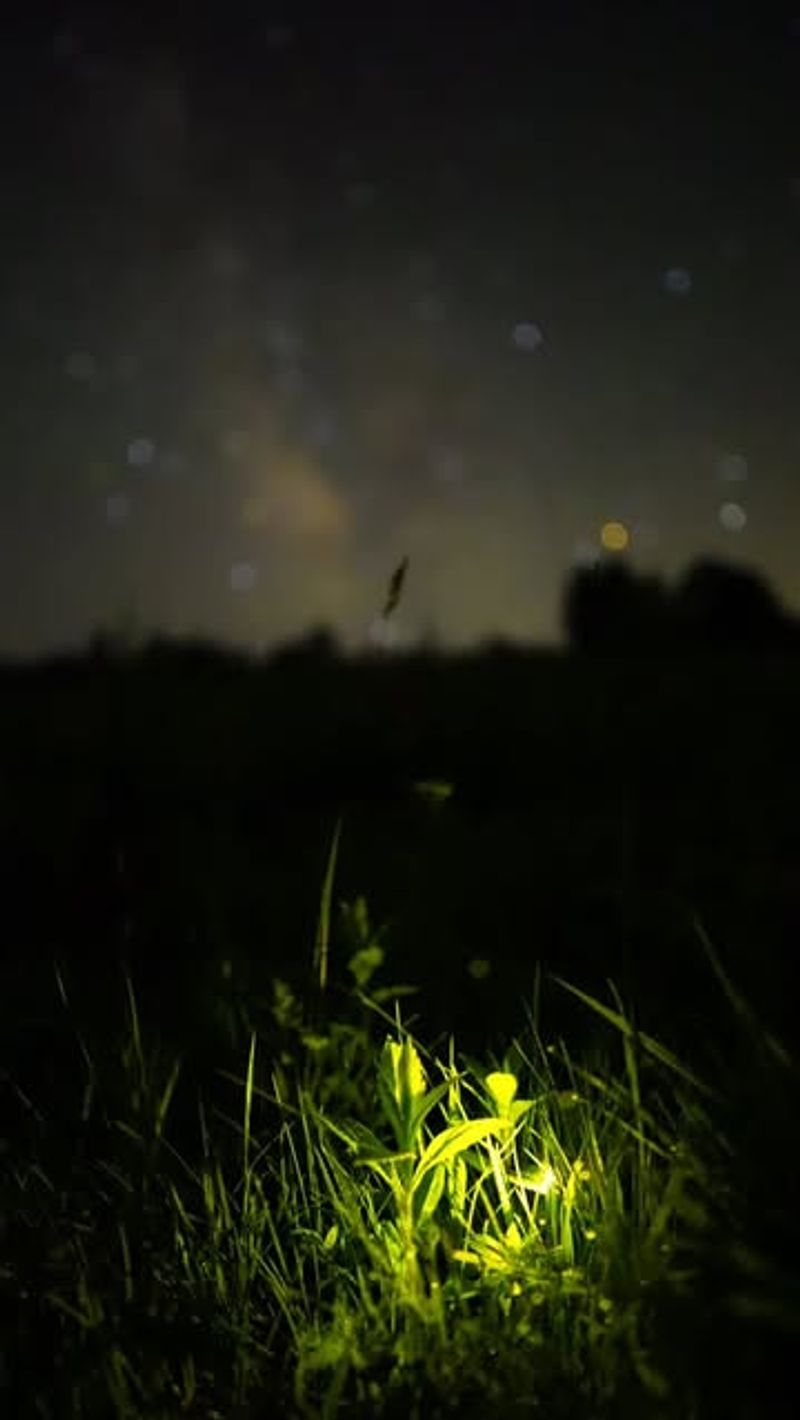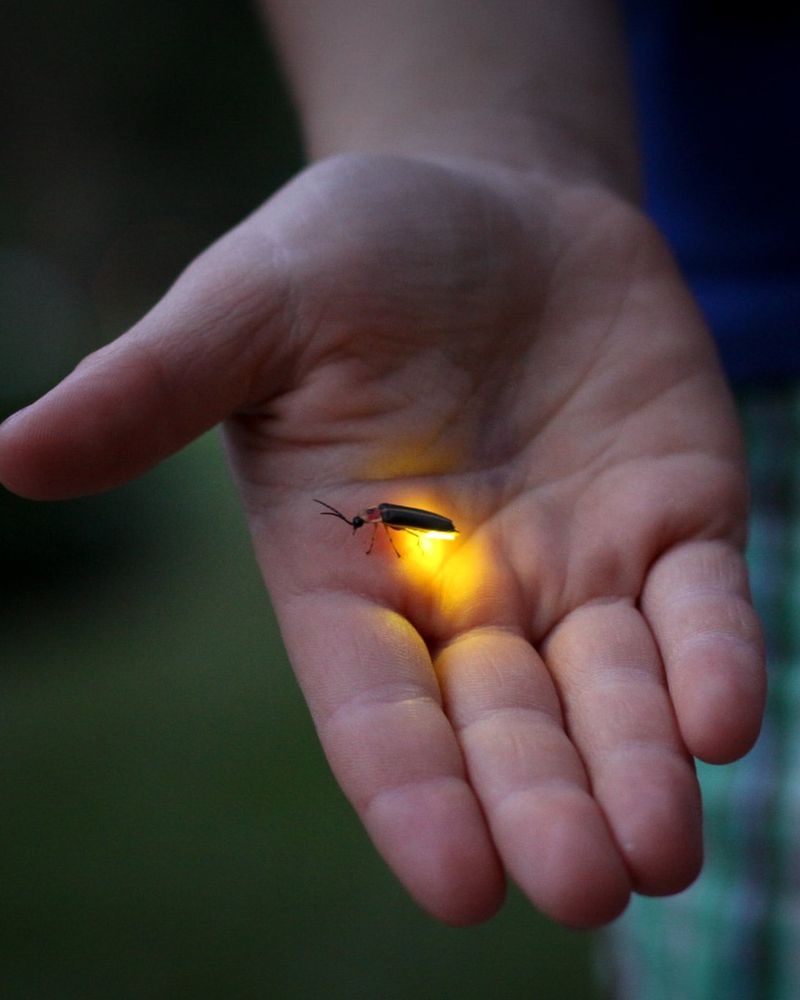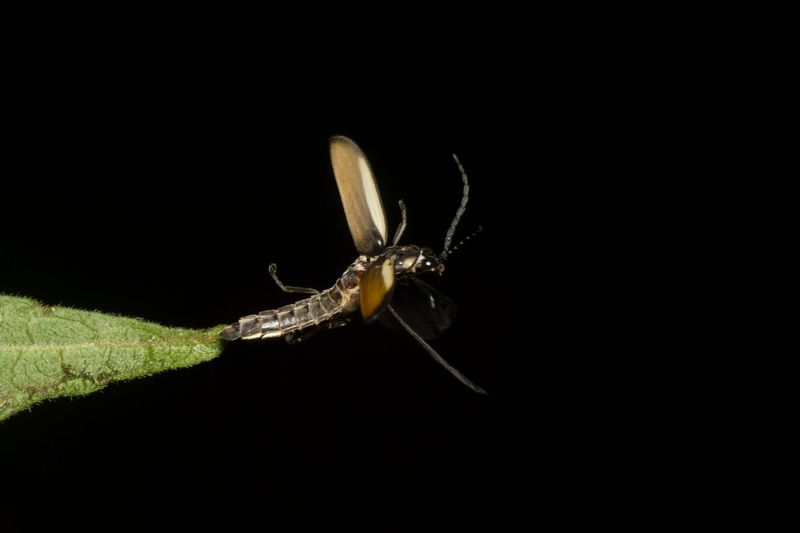The magical summer glow of fireflies has been fading from Maryland yards over recent years. Many homeowners have noticed fewer of these twinkling insects lighting up their evenings compared to decades past.
Several changes in our gardening practices, yard maintenance, and environmental shifts have contributed to this decline across the state.
1. Chemical Lawn Treatments Kill More Than Weeds
Those weed-free, perfectly green lawns come at a high cost for lightning bugs. Popular lawn chemicals don’t discriminate between pests and beneficial insects.
In my Maryland garden, I’ve noticed fewer blinking lights in areas where I’ve used store-bought fertilizers and weed killers. The larvae that live in soil are particularly vulnerable to these chemicals.
Switching to organic lawn care methods has made a noticeable difference, with more firefly visitors returning each summer after I stopped the chemical treatments.
2. Light Pollution Disrupts Mating Signals
Bright outdoor lighting confuses these insects during their courtship rituals. The flashing patterns male lightning bugs use to attract females get lost against artificial light sources.
Motion-sensor lights, bright porch fixtures, and even string lights in Maryland backyards create an environment where these insects struggle to find mates. Their communication system evolved over millions of years for darkness.
From my own experience, I’ve noticed more firefly activity in the sections of my yard that remain darker at night.
3. Loss Of Native Plants Reduces Habitat
Modern landscaping trends favor non-native ornamentals and exotic plants that look pretty but provide little ecological value. These plants don’t support the small creatures that fireflies feed on.
Native Maryland plants like joe-pye weed, black-eyed Susans, and native grasses create the right environment for lightning bug populations. They provide food sources and the proper moisture levels these insects need.
For me, planting native flowers seemed to help bring back more fireflies to my yard after several years of absence.
4. Excessive Mulching Destroys Larval Habitat
Heavy mulching might look tidy, but it creates barriers for lightning bug larvae that need to reach the soil. The young insects develop in moist soil environments before emerging as the glowing adults we recognize.
Many Maryland gardeners don’t realize that applying too much mulch around plants and trees eliminates crucial firefly nursery areas. The larvae spend up to two years in this stage before maturing.
Leaving some areas with lighter mulch or natural leaf litter has made my garden more hospitable to these beneficial insects.
5. Drought And Changing Weather Patterns
Maryland’s shifting climate conditions have brought more frequent dry spells that are particularly hard on moisture-loving insects. Lightning bugs thrive in slightly damp environments with stable temperatures.
The larvae need consistent soil moisture to survive their long development period. When summer droughts hit the region, fewer adult fireflies emerge the following seasons.
I’ve observed this pattern in my own yard – after particularly dry years, the firefly population noticeably decreases, sometimes taking several seasons to recover.
6. Overly Tidy Yard Maintenance
The current trend toward perfectly manicured yards eliminates the slightly wild spaces these insects need. Removing fallen logs, leaf litter, and tall grasses destroys prime lightning bug habitat.
Adult fireflies lay eggs in moist, protected areas with decaying plant material. Without these natural features, they simply can’t complete their life cycle in Maryland yards.
Leaving a small section of my backyard in a more natural state has created a sanctuary where I now see far more blinking lights on summer evenings.
7. Increased Mosquito Control Measures
The battle against mosquitoes in Maryland often becomes a war against all insects. Broad-spectrum insecticides and mosquito foggers kill beneficial insects alongside the pests we target.
Community-wide spraying programs have intensified as mosquito-borne diseases have become more concerning. The unintended consequence is fewer lightning bugs lighting up our summer nights.
After my neighborhood reduced chemical mosquito treatments, residents reported seeing more fireflies returning to their gardens within just two seasons.
8. Habitat Fragmentation From Development
Maryland’s growing suburban areas have broken up once-connected natural spaces into isolated patches. Lightning bugs can’t easily travel between these fragmented habitats to maintain healthy breeding populations.
New housing developments often eliminate the meadows, forest edges, and wetland areas where these insects historically thrived. Without connected green corridors, local populations become isolated and vulnerable.
Creating community firefly sanctuaries with native plants has helped some Maryland neighborhoods preserve these magical insects despite surrounding development.

